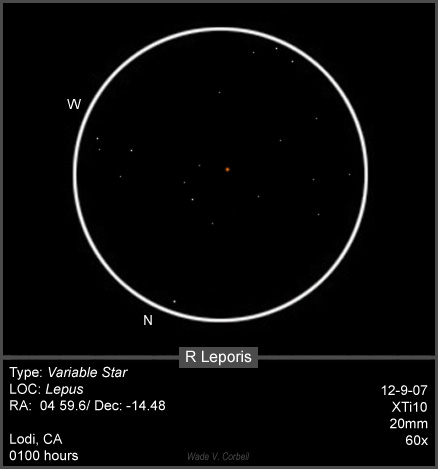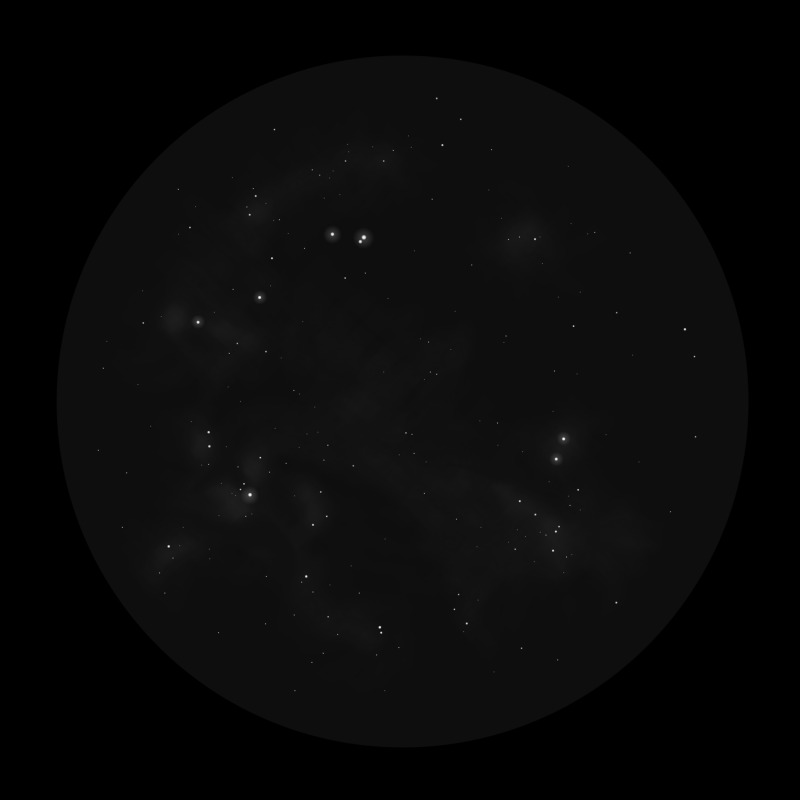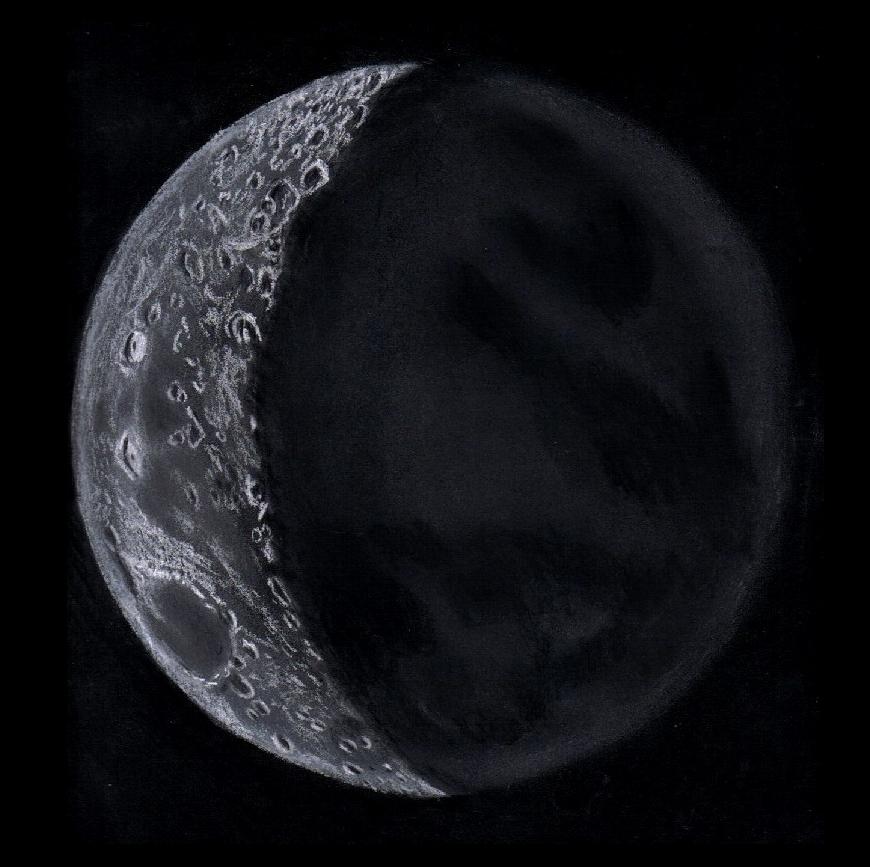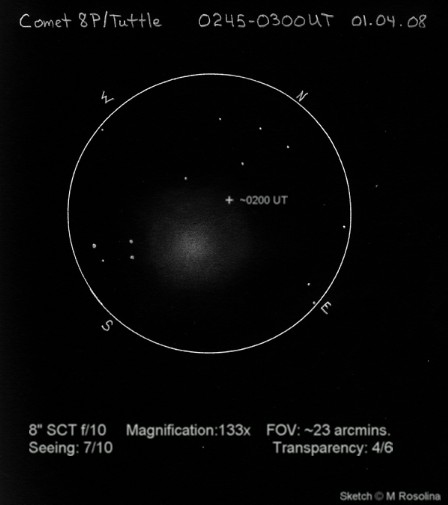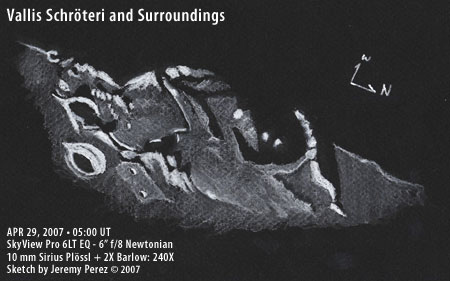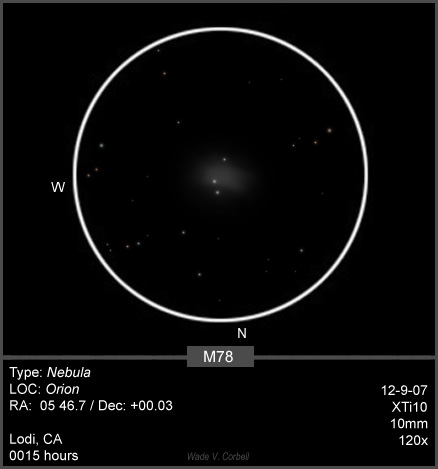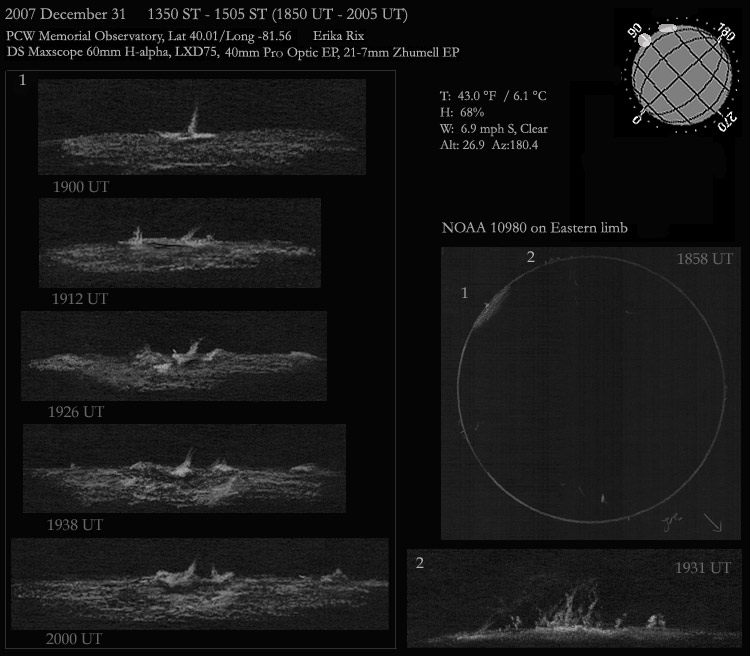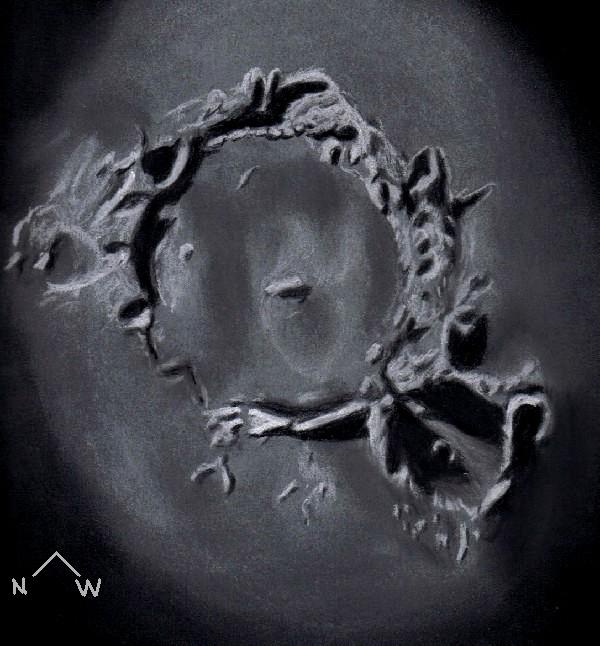
Pitatus and Hesiodus in the Morning
By Frank McCabe
Pitatus and Hesiodus in the Morning
On this evening I was able to take full advantage of a break in the weather with
the nearly nine day old moon high in my southern sky. As luck would have it
craters Pitatus (98km.) and Hesiodus (44km.) were positioned in full light beyond
the sunrise terminator and displaying some of their best features. What initially
caught my eye was the famous “sunrise ray” beaming across the floor of Hesiodus
through a break in the northwestern wall. This sun ray play was underway for about
45 minutes before I began this sketch. Partially illuminated near the floor center
of Hesiodus was little crater D with much of its rim reflecting sunlight. Hesiodus
and its larger neighbor Pitatus are both ancient worn Nectarian period craters on
the south border of Mare Nubium. Pitatus is a floor fractured crater with lava
having flooded the floor through the many cracks especially near the inner walls.
Most of Rimae Pitatus was in shadow at the time of this observation and the low
elongated central peak was dazzling in the sunlight. Although the shallow floor of this
crater was in light, the lava on the floor is dark and in places is interrupted by
brighter regions. The entire floor is mostly smooth and gradually rises and falls
especially close to the inner rim. For me the view was about as good as it gets in lunar observing.
Sketching:
For this sketch I used: black Strathmore 400 Artagain paper, 12”x 9”, white and
black Conte’pastel pencils and a blending stump. Brightness was slightly decreased
after scanning.
Telescope: 10 inch f/5.7 Dobsonian and 9mm eyepiece 161x
Date: 1-17-2008 0:05-1:15 UT
Temperature: -1°C (30°F)
partly cloudy, slight but cold wind
Seeing: Antoniadi III
Co longitude: 21.2°
Lunation: 8.8 days
Illumination: 66.4 %


